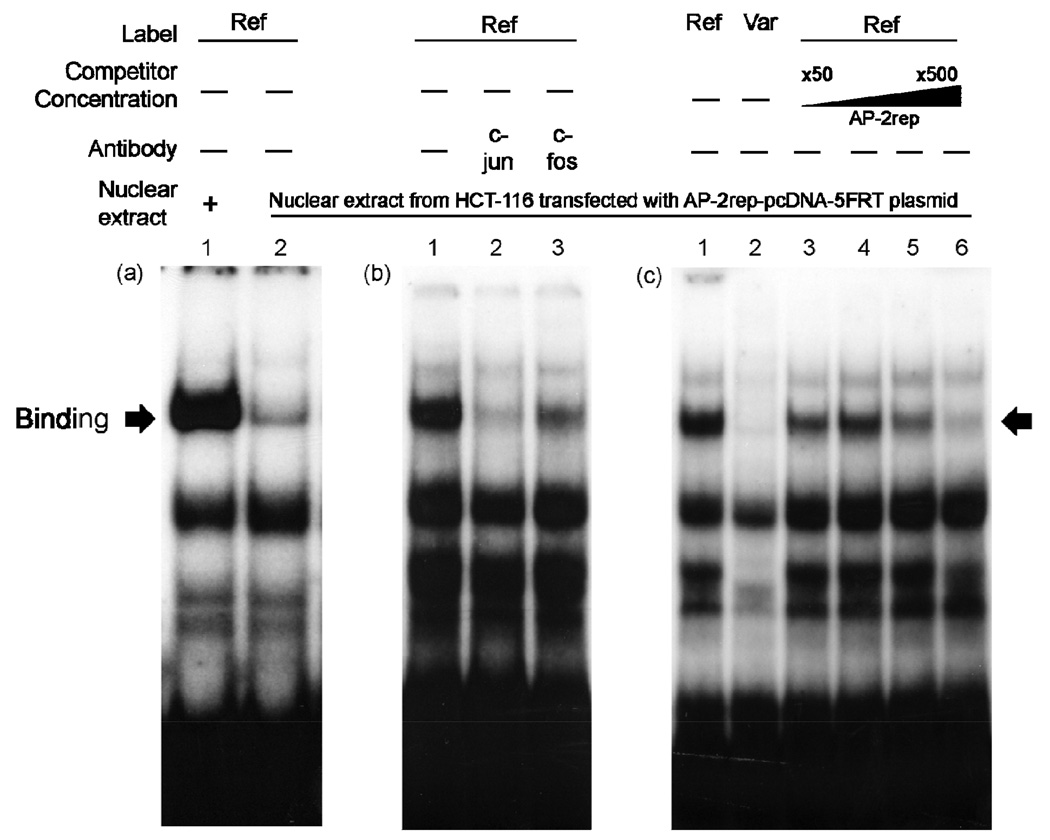Figure 4.
Effect of AP-2rep on the binding of DNA with AP-1. (a) Reference oligonucleotides (2×105 counts/min) were incubated with nuclear protein extracts (20 µg) obtained from HCT-116 (lane 1) or AP-2rep-over-expressed HCT-116 cells (lane 2). (b) Reference oligonucleotides (4×105 counts/min) were incubated with nuclear protein extracts (30 µg) obtained from AP-2rep-overexpressed HCT-116 cells (lanes 1–3). Supershift experiments were performed with the antibodies against phosphorylated c-jun (lane 2) and c-fos (lane 3) added separately to each gel shift reaction. (c) Oligonucleotides (4×105 counts/min, reference g.−66T: lane 1 and lanes 3–6, variant g.−66C: lane 2) were incubated with nuclear protein extracts (30 µg) obtained from AP-2rep-over-expressed HCT-116 cells. Competition reactions were performed using different folds (25 (lane 3), 50 (lane 4), 100 (lane 5), and 250 (lane 6)) of molar excess of unlabeled consensus AP-2rep oligonucleotides. The arrow indicates the position of the DNA protein complex.

